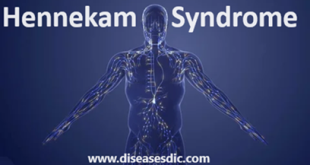Definition
Hemangioma is a type of benign (non-cancerous) tumor in infants. This abnormal cluster of small blood vessels appears on or under the skin, typically within one to three weeks after birth. Often, there is no mark or only a faint birthmark on the skin that brightens in color and increases in size over the baby’s first 2-4 months of life (proliferative phase). The area then stabilizes in size and color and then starts to fade and shrink (involution phase). Most hemangiomas are gone by 3 to 5 years of age. Some may cause residual areas of extra skin or small blood vessels called telangiectasias.
The vessel grouping that causes hemangioma
Most infantile hemangiomas cause no complications and go away without treatment. Between 4 to 10 percent of Caucasian infants are born with at least one hemangioma and they are three to five-time more common in females (especially fair-skinned ones) than males. Premature infants are more likely to have a hemangioma, and they occur more frequently in Caucasian infants than Asian infants and are rare in African-Americans
Hemangioma on the skin surface
Types of Hemangioma
Hemangiomas may occur anywhere on the body. Some children may have more than one. There are three main types:
Superficial (on the surface of the skin): These look flat at first, and then become bright red with a raised, uneven surface.
Deep (under the skin): These appear as a bluish-purple swelling with a smooth surface.
Mixed: These hemangiomas have both superficial and deep components.
Hemangioma causes
Experts don’t know why these benign tumors form. However, they’re more common in:
- Infants with low birth weight
- Premature infants
- Caucasian infants
Historically, infantile hemangiomas were thought to be more common in females, but this is not always observed. In some cases, hemangiomas run in families. They can also appear spontaneously, so there may be a genetic component to the condition.
There’s no way to prevent hemangiomas of the skin because their exact cause is unknown.
Hemangioma risk factors
Ulceration, Infections, and Bleeding
Ulceration or the formation of a sore is the most common complication of IH. It occurs in up to 15% of cases usually 2 to 3 months after birth, but may also be found in newborn babies. Ulceration is linked to harmful effects on the body and health. It is typically seen on the face and in the area around the anus and genital organs. Ulcerations can be very painful, leave scars upon healing, and even result in disfigurement.
The first signs of ulceration include blackish spots on red patches of skin. Pain can make it difficult to treat the wound. Ulceration can also lead to infection and bleeding which, left untreated, can cause severe anemia and the need for transfusion. Heavy bleeding does not happen often and is rarely life-threatening.
Breathing
While the blocking off the airway is a rare complication of hemangiomas, IH of the upper airways can affect breathing. Such hemangiomas are usually discovered during a routine medical exam of the bronchial tubes. Lesions on the upper lip hardly ever obstruct both nasal passages, but can still be a problem for infants who need to breathe through their nose.
Facial
Frequent complications of ulceration are scarring and disfigurement of the face. ‘Pendulum’ IH can appear on the nose, eyelids, and lips. There is a risk for permanent, significant defects, especially with hemangiomas on the tip of the nose, lips, and ears. These hemangiomas often require more aggressive treatment. Hemangiomas that deform the face can cause emotional pain for parents and children as they get older and begin to socialize.
Vision
A small hemangioma on the upper eyelid can put pressure on the retina, cornea, or optic nerve, and permanently harm a child’s vision. These hemangiomas should be seen by a vascular anomalies specialist and a pediatric ophthalmologist (eye doctor) on a regular basis.
Psychological effect
Hemangiomas that cause disfigurement or functional limitations may affect the quality of life of both the children and their families due to the fact that the majority of hemangiomas occur in visible locations on the head and neck and they can distort anatomical landmarks. Disfigurement can cause devastating psychological effects for parents and children. The negative reaction from strangers, social stigmatization, sadness, stress and low self-esteem are some of the common reported effects of having such lesions.
Symptoms of Hemangioma
Hemangiomas can take on a different appearance depending on the location of the birthmark.
- A strawberry hemangioma is an abnormal collection of blood vessels in the skin. Because it is superficial (on the surface of the skin), it has a bright red color and a well-defined border.
- Hemangiomas located in the layer of fat beneath the skin have a bluish, lumpy appearance. Previously called cavernous hemangiomas because they were thought to contain larger blood-filled vessels, these are actually quite similar to strawberry hemangiomas, and their blue color is because of their deeper location under the skin.
- A mixed hemangioma is located in both the skin and the fat layers and can take on a similar appearance to both types explained above.
Strawberry hemangioma
Infantile hemangiomas will typically grow and change appearance during the first 6 to 12 months of life. At birth, your child may have a faint red or pink mark, but these birthmarks generally become larger and more noticeable during the first year. They can also become raised lumps. After that first year, they generally shrink over the next several years.
Hemangioma complications
These complications can occur from a hemangioma:
- Bleeding (especially if the hemangioma is injured)
- Problems with breathing and eating
- Psychological problems, from skin appearance
- Secondary infections and sores
- Visible changes in the skin
- Vision problems
Diagnosis and test
Clinical exam: Hemangiomas differ in appearance depending upon how deep they develop in the skin. Hemangiomas on the surface of the skin (superficial hemangiomas) are commonly bright red and raised. Often they will first appear as a flat, red area. Deeper hemangiomas tend to be skin-colored or slightly bluish with a smooth surface. Often, hemangiomas will have both superficial and deep parts (combined or mixed hemangioma).
Imaging: Imaging is not usually necessary except under special circumstances. If your child has a hemangioma of the middle-lower back, see your doctor to decide whether imaging of the spine (special pictures, most commonly MRI) may be appropriate. If your child has multiple (more than 5) hemangiomas, it is recommended your child be seen by a doctor to determine whether an ultrasound of the liver or other evaluation is appropriate.
Pathology: Hemangiomas are most often diagnosed by physical examination and so rarely require a skin biopsy (when a small piece of skin is taken for examination under the microscope).
Genetics (if applicable): There is no known gene that causes hemangiomas and thus genetic testing is unnecessary.
Treatment
Treatment is dependent upon both the stage of growth (proliferation vs. involution) of the lesion, the presence of complications and emotional needs and considerations. Observation, drug therapy, laser therapy, and surgical removal are the four most common management options. In some patients, a combination of several of these treatments may be used over time.
Observation: In most cases, observation is the best course to follow, especially when the hemangioma is involuting and your child’s functioning is not impaired.
Drug therapy: Medical therapy is used for complicated hemangiomas in the proliferative phase. Their purpose is to slow the growth and decrease the size of the lesion to prevent further complications. Medical therapy can be topical, injected, taken orally or given intravenously. Medications include:
- Timolol- This medicine is topical or applied directly to the hemangioma.
- Propranolol- This medication is typically used orally.
- Corticosteroids- This medication can be applied topically for small lesions, injected in to the skin or taken orally. Steroids are no longer used as first-line therapy.
- Vincristine- This is used for complicated hemangiomas that do not respond to other treatments. It must be administered through a special intravenous (IV) line.
Laser therapy: Laser therapy is used to treat ulcerated hemangiomas and superficial residual skin telangiectasias. This treatment option has not proven to be effective during the early growth phase of hemangiomas and can cause significant scarring.
Surgery: Surgery may be advised for selected patients, including (1) children with painful and ulcerated hemangiomas that do not heal; (2) children whose lesions interfere with breathing, vision, or other vital functions; (3) those who have hemangiomas that do not completely involute; and (4) those in whom hemangiomas have resulted in unacceptable scarring or deformity.
Wound care: Ulcerated hemangiomas may require aggressive wound care, treatment with topical antibiotics, laser therapy, and/or surgical removal.
Prevention
- Prevention is the preferred treatment for bleeding. Whether ulcerated or not, we recommend keeping the hemangioma clean with soap and water and moisturized at all times with any fragrance-free, mild moisturizing cream or even simple petroleum jelly.
- Trimming nails will also lessen the likelihood of inadvertently scratching the lesion.
- If irritated by clothing or a diaper seam, the hemangioma may be covered with light gauze dressing to protect it from being rubbed and irritated.
 Diseases Treatments Dictionary This is complete solution to read all diseases treatments Which covers Prevention, Causes, Symptoms, Medical Terms, Drugs, Prescription, Natural Remedies with cures and Treatments. Most of the common diseases were listed in names, split with categories.
Diseases Treatments Dictionary This is complete solution to read all diseases treatments Which covers Prevention, Causes, Symptoms, Medical Terms, Drugs, Prescription, Natural Remedies with cures and Treatments. Most of the common diseases were listed in names, split with categories.







